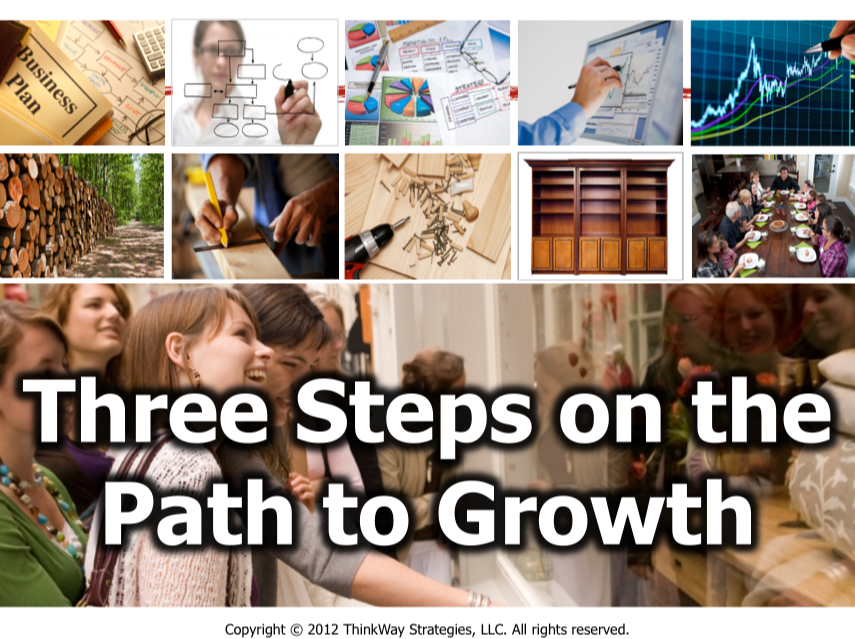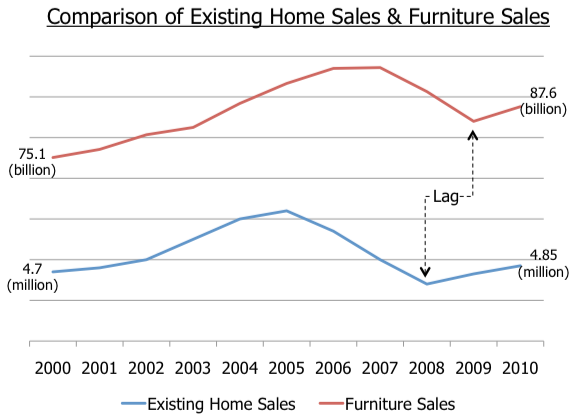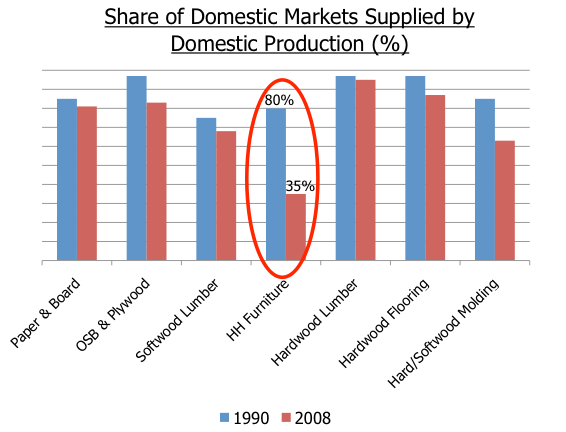Overview
Last Monday night, June 11, I was honored to unveil the newly renamed and repositioned Authentic Home Furnishings Association (formerly Unfinished Furniture Association). This small segment of the furniture industry represents several hundred independent retailers and manufacturers across the country all of whom, along with the rest of the furniture industry, have had a rough go of it the last several years. The keynote provided affirmation for some who are already leaders of change, a potential lifejacket for some who are struggling to survive, and probably a wait-and-see concept for many in the middle. Let’s hope those in the middle don’t wait too long. This is a hard lifejacket to put on when you get to the drowning stage.
repositioned Authentic Home Furnishings Association (formerly Unfinished Furniture Association). This small segment of the furniture industry represents several hundred independent retailers and manufacturers across the country all of whom, along with the rest of the furniture industry, have had a rough go of it the last several years. The keynote provided affirmation for some who are already leaders of change, a potential lifejacket for some who are struggling to survive, and probably a wait-and-see concept for many in the middle. Let’s hope those in the middle don’t wait too long. This is a hard lifejacket to put on when you get to the drowning stage.
Over the next few weeks, I’ll give you a summary of what was presented in a three part series (minus the consultant jokes which were pretty good). If you need more, you’ll have to give me a call. I can’t share confidential information or more than what was shared in the presentation but I can provide clarity where needed.
The presentation was built around three “steps” on a path to growth (granted, Bob Wiley would call them baby steps).
1. Successful leaders adapt their business (Part 1)
2. Successful businesses know their consumers (Part 2)
3. Growth comes when leaders differentiate their value proposition (Part 3)
Part 1 – Successful Leaders Adapt Their Business
So, why adapt? Well, how about considering these three trends.
1. Macroeconomics. There’s no question the furniture industry is tied to macroeconomic factors such as existing home sales, housing starts, durable goods orders, GDP, consumer confidence, unemployment, and others. Just look at one of the examples provided.
to macroeconomic factors such as existing home sales, housing starts, durable goods orders, GDP, consumer confidence, unemployment, and others. Just look at one of the examples provided.
2. Globalization. In every industry, the world seems to be getting smaller. Where once 80% of domestic household furniture markets were supplied by domestic  production, that number is now a third. And everyone knows the story of Ikea. Competition isn’t headquartered down the street but half way around the world.
production, that number is now a third. And everyone knows the story of Ikea. Competition isn’t headquartered down the street but half way around the world.
3. Technology. It used to be when consumers wanted to buy a piece of furniture they’d open the yellow pages to make a list, visit stores to see the choices and then make a purchase. But all that has changed. Technology and the likes of Facebook, Google searches, Pinterest and others have dramatically changed and complicated the path to purchase. Where once most decisions were made in-store, now most decisions are made long before the consumer ever gets to the store the first time.

And these three trends have had a dramatic impact on the furniture industry as an industry structure analysis pointed out. For example, traditional furniture are dramatically losing share: 10% in two years. That means, in a $90B industry, $9 billion is going somewhere else; primarily to discount or club stores or even new channels like online or Craig’s list. In 2008, well over half of consumers shopping for home furnishings shopped at a traditional furniture store. One year later, that number plummeted to less than one third.
So, what do great leaders do? In a word, great leaders… adapt. There are countless examples but here were two.
 In 1850, the Studebaker brothers were blacksmiths and one was a wheelbarrow maker. The adapted their business model and 25 years later in Indiana they had the largest carriage plant under one roof in the nation. From nothing to the largest: that’s adapting. And twenty five years after that, when thousands of carriage making businesses were going out of business, they adapted again and entered the automotive industry. Yes, it’s true the last Studebaker rolled off the production line in the late 1960s but that was over 110 years later and I’m convinced if those brothers would have still been around, they would have adapted again.
In 1850, the Studebaker brothers were blacksmiths and one was a wheelbarrow maker. The adapted their business model and 25 years later in Indiana they had the largest carriage plant under one roof in the nation. From nothing to the largest: that’s adapting. And twenty five years after that, when thousands of carriage making businesses were going out of business, they adapted again and entered the automotive industry. Yes, it’s true the last Studebaker rolled off the production line in the late 1960s but that was over 110 years later and I’m convinced if those brothers would have still been around, they would have adapted again.
Or, how about a more recent example: IBM. Lou Gerstner (Who Says Elephants Can’t Dance?) is largely credited with keeping IBM from going out of business in the 1990s. Although IBM had become the number one provider of desktop PCs, Gerstner saw that products had become commoditized and the profit pool was shrinking. IBM focused on its services business and eventually exited the PC business. They are now the largest consulting company in the world.
You can’t compare the challenges the Studebakers or IBM faced with the challenges the membership of the Unfinished Furniture Association faces today. That’s not the point. The point is, when faced with challenges great leaders will adapt their business. Not wait for things to change. Not hope things will change. Hope isn’t a strategy. Successful leaders rise up to the challenge and adapt their business models to get on a path to growth.